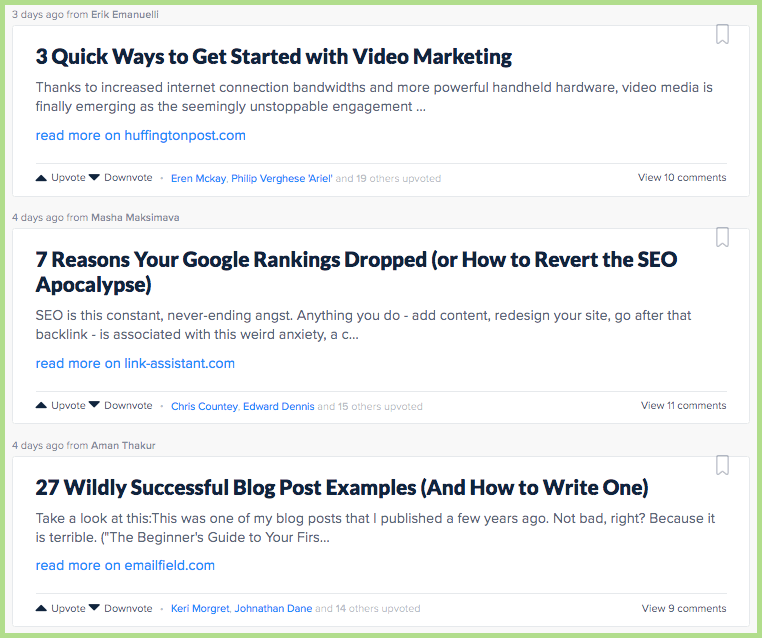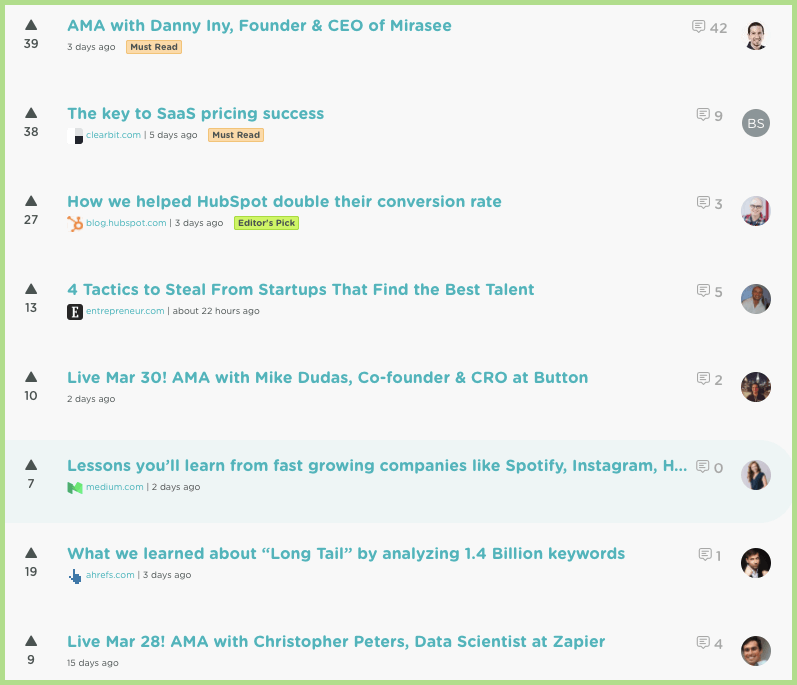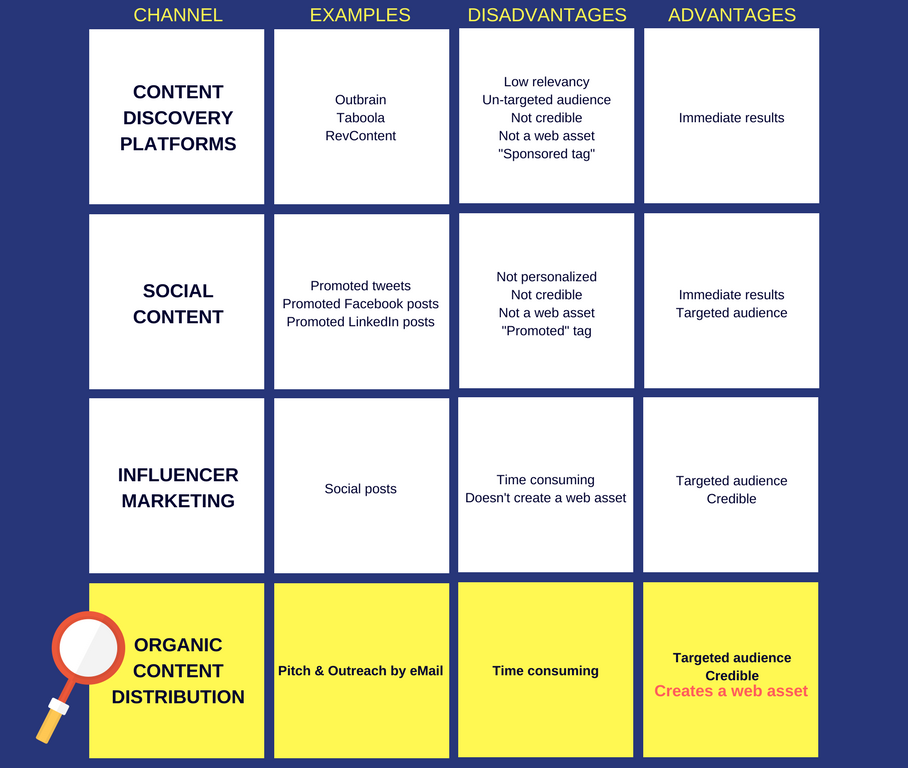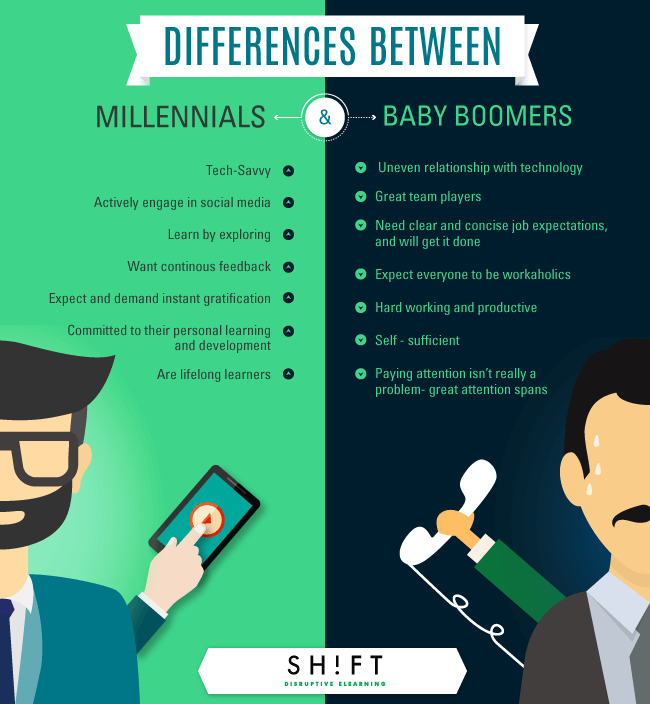The Best Strategy for Content Distribution? Go Organic. Here’s Why.
Wednesday,
Fruits and vegetables, poultry and cattle have all gone organic. Wine and coffee too. Cotton? Of course. Doesn’t it make perfect sense that content distribution will be next in line to go full-blown organic?
Actually no. Money will continue to dominate content distribution marketing, and will probably only get more expensive, as everything else (did we say organic food?)
But, there is a case to be made for an organic content distribution strategy.
Before we begin, let’s set the guidelines for what we define as Organic Content Distribution for the purpose of this discussion:
Targeting only new audiences. Your mailing list, social followers, existing followers on industry communities – all these don’t count.
All industries; not only the online marketing industry.
Types of content to be distributed: newsworthy, research, guide, opinion, trending / fun (more on each type bellow.)
So What is Organic Content Distribution Marketing?
Organic content distribution is the process of creating content to be published on your own web assets, with the intention of later soliciting mentions of your work on third-party sites as a means to generate traffic.
The notion of pre-designating a piece of marketing content for the above purpose gives the planning, strategy and creation stages an additional set of considerations to take into account.
What Are the Benefits of Organic Online Content Distribution?
It’s free. Well, not entirely. You do invest your time into the process so there is the cost of your work hours, but you don’t pay external digital entities for their amplification services (social ads, promoted posts and tweets.)
It gives you strong credibility. Social content evaporates pretty quickly – even if you get retweets and likes from experts in your industry, those also sink down fast. Mentions in long-form content (blog posts and articles), especially from recognized names, declare you as a credible source and that’s gold.
It reaches a highly targeted audience. Since the original piece of content is published on one of your own assets, it must be relevant to your industry. For the same reason, the mentions will also come from relevant websites and organic distribution platforms that target the same audience as you.
It can create a valuable web asset for you. If the mention is in a strong publication you can later use it for SEO purposes and promote it to support your own brand.
Now Let’s Talk Shop
The reason an organic content distribution strategy is so attractive is precisely because organic reach in social networks has shrunk. You need to promote your post, or promote your tweet, if you want it to get any traction. This is how the social systems are programmed these days.
The other amplification method that is showing strong results now are the influencers, who are paid as well. The other side of the coin is authority marketing – leveraging your own experience and expertise instead that of others.
One of the main drivers of growth of the social sphere was the ability to reach new audiences organically. Now it costs – a lot – and has become a financial burden on brands.
If you can achieve the same result through a different process and have it non-paid, why wouldn’t you?
Here’s How Not to Do Digital Content Distribution
There are communities for ‘organic’ content distribution; the marketing industry huddles around Inbound, GrowthHackers and specific communities in Slack. Apologies for not being familiar with other industries’ communities and services of choice.
 Image source: inbound.org
Image source: inbound.org

image source: grwothhackers.com
It’s true: these content distribution channels help you distribute your content, but in the same way social network sites do. They turn the spotlight on the piece of content you are looking to promote for a few hours or days. People are exposed to your content, but that’s not an act of distribution. It is in fact paid content distribution or an amplification for the purpose of buzz.
It doesn’t create a web asset for you nor does it general consistent traffic.
(Anyone else ready to forbid the use of the words “buzz” and “machine” ever again in the marketing conversation? PM me. Just kidding, you think I have a Facebook account?)

Here’s the Strategy
Pretty straightforward actually. We’re not discovering new continents here, just distributing content.
Once the piece of content was created, it’s time to start scouting and following relevant third-party publications that would be interested, that their audience would be interested. There are two types of groups to target here:
- Industry publication sites (including company blogs)
- Shoulder-industries publications. Shoulder-industries are ones that relate to the subject discussed in your content, indirectly.
If your piece of content is about the future of sports betting, your core industry would be the sports betting industry.
One possible shoulder-industry would be the entire sports industry. Another would be the online gambling industry. If, like in this article, you are mentioning the fact that major tech companies are planning to jump in once sports betting is legalized in the U.S., a third shoulder-industry would be the digital industry. A fourth would be the chip and sensor makers (planned to be imbedded in uniforms, helmets, sports balls – as also mentioned in the article.)
So basically any industry that can relate to something you touch upon in your content, that get an interesting angle that they weren’t aware of, becomes a target for distribution.
After you assembled all these publication of interest, the next step is to hit the mailbox.
Emailing Can Be Hard to Do
We’re not going to get into the arts & crafts of email outreach. Enough has been written about it. It’s a delicate game of attitude, manners, courtship and awareness of your place in the food chain. When done right though, it is priceless and you can build a vast content distribution network.
Here’s one of the finest examples. The people at Directive Consulting raised their email response rate from 8% to an incredible 34%. It’s a fascinating read.
Still, the purpose of their email outreach was guest posting, so the offer was very appealing: we want to write for you great content, for free.
With organic content distribution you are tasked with a heavier burden – to convince that the content you already wrote, that is published on your own asset is so good that it’s worth their time and effort to do a write-up based on it.
It’s also super important to understand who you are reaching out to, and how this specific audience segment likes to be approached. Here’s an example of how to think about your target audience – before you attempt to intrigue them:

image source
Email outreach is extremely time-consuming, a work of trial and error, especially so with organic content distribution. But, from our experience it’s totally worth it.
Now what I mentioned earlier about designating your content from the get-go for organic distribution makes more sense, because not every piece of content is worth a mention as a resource.
The Right Types of Content for Organic Distribution
Newsworthy – that’s the best of the bunch; it flies off the shelf. If you’ve got a news-like item that will generate interest in your industry (or even better, multiple industries) third-party sites, and blogs, publications will report on it; they’ll do a write-up and quote you as the source.
The only problem with newsworthy content is that it’s not the result of brainstorming and you won’t find it in ideation platforms. It’s a combination of sharp senses, connections and luck.
Research – another type ideal for organic distribution. If you’ve done a well thought-of research that uncovers meaningful insights, mentions are next.
Professional content today relies heavily on resources and data. Citation-style mentions in blog posts and articles is ingrained into web writing. A solid research is a resource ripe for mentioning for many sites.
Guide – a super popular form of content, slightly more challenging for organic distribution, at least in the short-term. When you do organic distribution you usually intend to quickly gain mentions on various platforms (especially with the newsworthy type that is time-sensitive.) With guides, plan for the long haul.
Guide mentions can’t be hurried. When’s the last time you saw a post that read, “We came across this super-awesome guide by so-and-so and you should check it out”? Guide mentions come naturally in informative, actionable posts but are suspended in time so to speak; they’ll come when they’ll come.
Opinion – really not the best organic distribution material. Like this very piece you’re reading right now. I’m confident enough that it will get mentions when others write about content marketing and explain “organic content distribution”, they will quote this piece as a source.
But trying to actively distribute an opinion piece doesn’t make real sense. Especially since everyone has an opinion these days.
Fun / Trending – there’s an art to organic distribution of fun and trending content. Identifying what is fun, or what will trend and when – this doesn’t come easy. We’re talking here about the creation, less the actual distribution.
The most crucial element here is timing; as is obviously the case with newsworthy. You need the content to hit the ground running.
